#scania bus
Text
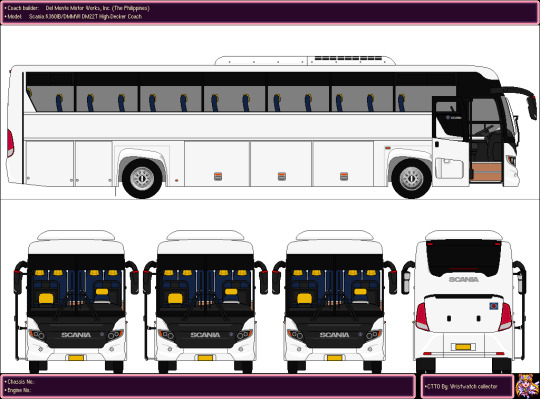
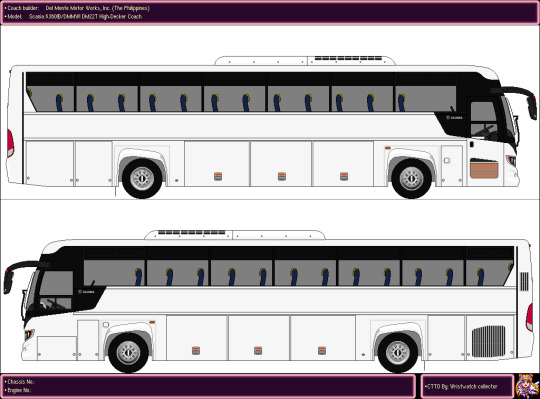
Scania K360IB/DMMWI DM22T High-Decker Coach
CTTO: @wristwatchcollector-2024 (for Scania Touring Front and Back)
#buses#artist#buses on the philippines#kenyou#del monte motor works#dmmwi#dm22t#scania#scania k360#scania k360ib#scania bus#scania touring#template#sailor moon#sailor stars#eternal sailor moon#sailor moon sailor stars#fuwa fuwa panic
3 notes
·
View notes
Photo


scania three-decker articulated bus
#scania#scania bus#usa#america#special purpose vehicles#guiness record#guinness record#articulated#articulating#superbus
0 notes
Text
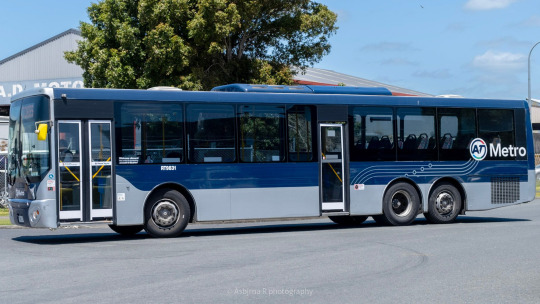
Ritchies Transport №9831 [Scania L94UB6/Designline] seen turning into Takaanini Depot.
New to Ritchies as №712, it was transferred from Swanson to Takaanini when Ritchies-Murphy Transport was formed and renumbered to its present number.
The 6 axle L94UB has one more year left on urban services.
16 notes
·
View notes
Text

#bus#autobus#travel#buses#busspotting#busspotter#buslovers#photography#mercedesbenz#busphotography#busmania#busologia#publictransport#transport#onibus#volvo#kerala#scania#mercedes#like#buslife#busindonesia#tamilnadu#india#love#tamil#omnibus#madscientistphotography
4 notes
·
View notes
Text



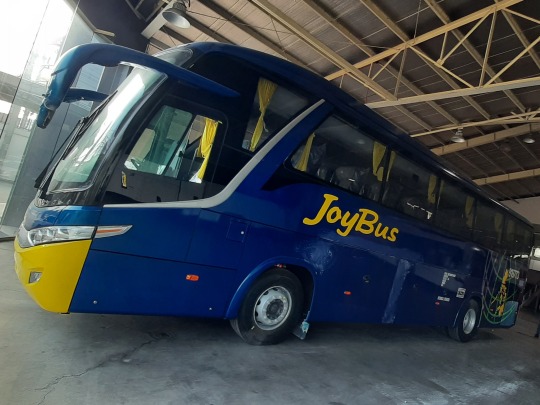

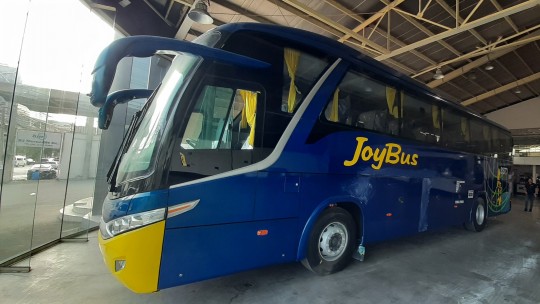
Bus rant: the fucking piece of shit Genesis Joybus.
The fucking Scania Marcopolo G7 Paradiso.
Made in fucking Brazil.
Fuck you, Genesis Joybus.
If Genesis Joybus is seeing this, they are a bunch of fucking dicks.
🖕🖕🖕🖕🖕
I really hope DLTBCo., ALPS, & Cagsawa Travel and Tours, will make the motherfuckers at Genesis Joybus bleed their fucking noses.
0 notes
Text
CHENNAI TRAVELS | CARS RENTAL SERVICES IN CHENNAI | LUXURY CAR RENTAL IN CHENNAI | RENTAL CARS IN CHENNAI WITH DRIVER | CAB RENTAL CHENNAI | WEDDING CAR RENTAL IN CHENNAI | 7 SEATER CAR RENTAL IN CHENNAI | 14 SEAT TEMPO SEATER VAN RENTAL IN CHENNAI | 16 SEAT TEMPO SEATER VAN RENTAL IN CHENNAI | 17 SEAT TEMPO SEATER VAN RENTAL IN CHENNAI | 18 SEAT TEMPO SEATER VAN RENTAL IN CHENNAI | 20 SEAT TEMPO SEATER VAN RENTAL IN CHENNAI | 21 SEATER MINI BUS RENTAL IN CHENNAI | 25 SEATER MINI BUS RENTAL IN CHENNAI | 30 SEATER MINI BUS RENTAL IN CHENNAI | AC BUS RENTAL IN CHENNAI | SCANIA BUS RENTAL IN CHENNAI | TOURIST BUS RENTAL IN CHENNAI | VOLVO BUS RENTAL IN CHENNAI

Looking For Cars Rental Services In Chennai,luxury Car Rental In Chennai,rental Cars In Chennai With Driver,cab Rental Chennai,wedding Car Rental In Chennai,7 Seater Car Rental In Chennai,14 Seat Tempo Seater Van Rental In Chennai,16 Seat Tempo Seater Van Rental In Chennai,17 Seat Tempo Seater Van Rental In Chennai,18 Seat Tempo Seater Van Rental In Chennai,20 Seat Tempo Seater Van Rental In Chennai,21 Seater Mini Bus Rental In Chennai,25 Seater Mini Bus Rental In Chennai,30 Seater Mini Bus Rental In Chennai,ac Bus Rental In Chennai,scania Bus Rental In Chennai,tourist Bus Rental In Chennai,volvo Bus Rental In Chennai
Visit : https://chennaitravels.com.in/
#CHENNAI TRAVELS#CARS RENTAL SERVICES IN CHENNAI#LUXURY CAR RENTAL IN CHENNAI#RENTAL CARS IN CHENNAI WITH DRIVER#CAB RENTAL CHENNAI#WEDDING CAR RENTAL IN CHENNAI#7 SEATER CAR RENTAL IN CHENNAI#14 SEAT TEMPO SEATER VAN RENTAL IN CHENNAI#16 SEAT TEMPO SEATER VAN RENTAL IN CHENNAI#17 SEAT TEMPO SEATER VAN RENTAL IN CHENNAI#18 SEAT TEMPO SEATER VAN RENTAL IN CHENNAI#20 SEAT TEMPO SEATER VAN RENTAL IN CHENNAI#21 SEATER MINI BUS RENTAL IN CHENNAI#25 SEATER MINI BUS RENTAL IN CHENNAI#30 SEATER MINI BUS RENTAL IN CHENNAI#AC BUS RENTAL IN CHENNAI#SCANIA BUS RENTAL IN CHENNAI#TOURIST BUS RENTAL IN CHENNAI#VOLVO BUS RENTAL IN CHENNAI
0 notes
Text
Our late-model coach bus service Richmond Hill can readily transport around 56 passengers in a single ride in utmost luxury and comfort. No matter, what time of the day or night it is, our chauffeurs are always ready to accommodate your traveling needs for late night city tours, prom parties, concerts, corporate events, weddings, airport shuttle and lot more.
#bus#autobus#travel#buses#busspotting#busspotter#instabus#buslovers#photography#mercedesbenz#busphotography#busmania#busologia#publictransport#transport#onibus#volvo#kerala#scania#mercedes#o#instagram#like#buslife#busindonesia#t#s#love#vw#omnibus
0 notes
Photo
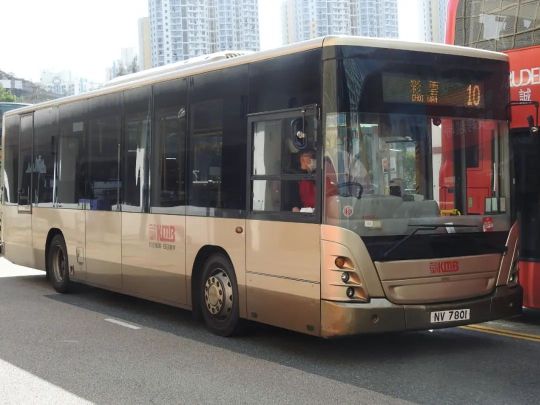
九巴 ASB18 @ 彩雲 10 KMB ASB18 @ CHOI WAN 10 @kmbhongkong @scaniagroup 九巴 斯堪尼亞 K230UB 10.6米 KMB Scania K230UB 10.6M 2023年02月01日(星期三) 01st February, 2023 (Thursday) 豐盛街 Fung Shing Street #香港 #巴士 #香港巴士 #九巴 #斯堪尼亞 #斯堪尼亞K230UB #斯堪尼亞K230UB10點6米 #ASB18 #九巴ASB18 #NV7801 #彩雲10 #九巴10 #kmbhongkong #scaniagroup #CarmenKennyLukeYip #HongKong #Bus #HongKongBus #KMB #Scania #ScaniaK230UB #ScaniaK230UB10Point6Meters #ASB18 #KMBASB18 #NV7801 #CHOIWAN10 #KMB10 #kmbhongkong #scaniagroup #CarmenKennyLukeYip(在 豐盛街) https://www.instagram.com/p/CpmkOMKSyMM/?igshid=NGJjMDIxMWI=
#香港#巴士#香港巴士#九巴#斯堪尼亞#斯堪尼亞k230ub#斯堪尼亞k230ub10點6米#asb18#九巴asb18#nv7801#彩雲10#九巴10#kmbhongkong#scaniagroup#carmenkennylukeyip#hongkong#bus#hongkongbus#kmb#scania#scaniak230ub#scaniak230ub10point6meters#kmbasb18#choiwan10#kmb10
0 notes
Text
#youtube#tumblr#vlogging#viral#daily vlog#facebook#food#inspiration#city#best#instagram#whatsapp#bus#bus lover#travel#tour#solo#journey#top#scania#volvo
1 note
·
View note
Text
Trains in Miraculous Ladybug - Bonus: The Bus
[Part 1: The Metro Train]
[Part 2: The Metro Station]
[Part 3: Startrain]
[Part 4: The Gare du Nord]
It’s been a while since I made these posts, but I figured I might as well update them, and talk about the remaining public transit vehicle in the show that hadn’t been mentioned yet: The bus, shown here almost in its natural habitat.

Just like most other vehicles, the show has just the one, which is always signed as line 33 to Gare d'Austerlitz. The line is strictly fictional, just like the Metro lines, to justify this bus appearing everywhere in the city.
So let's talk about the bus itself. In the show, it gets thrown around, used to escape Zombies, it loses its breaks at the start of Gladiator, it's an animal prison, it receives the least destructive cataclysm of all time (in Animan) and way more. While it has no logos, and a slightly distorted front end presumably to avoid copyright infringement (yes, vehicle design is covered by copyright), it is unmistakably an Agora by… well, that's difficult actually, because this bus type has a complicated history.


First picture by Vincent Babilotte, from Wikimedia Commons, CC-BY-SA; second by Eole99, from Wikimedia Commons, CC-BY-SA
The Renault Agora was introduced in 1996 as Renault's first fully low-floor bus. In 1999, Renault Véhicules Industriels (commercial vehicles) merged their bus business with Iveco, functionally the commercial vehicle division of Fiat if you squint a bit. The new joint venture was known as Irisbus, and from 2002, the Agora became known as Irisbus Agora. Their logo is actually a dolphin ouroboros if you look closely; I have no idea why.
At the same time Renault and Irisbus were also busy buying companies in eastern europe, and reused their names, which means the Agora was also sold under such famous names (famous among bus nerds anyway) as Karosa and Ikarus in Eastern Europe. Those seem to have been co-branding things, those buses still had either the Renault Rhombus or the Irisbus dolphin on the front, and then a Karosa or Ikarus logo somewhere on the side. Some buses were also sold as Škoda (the part that makes trains, not the part that makes cars). We'll get to those later. Finally, in some countries, it was sold under the incredibly vague name "Citybus".
For Paris, we'll only care about the Renault and Irisbus versions, though. These are functionally the same, they just differ in the logo on the front, which the Miraculous bus simply omits entirely. On the inside, the Irisbus version has newer Iveco engines instead of Renault ones to meet newer emission standards, but that's irrelevant from the outside.
The main feature to recognise this bus from a distance is actually in the rear.

In order to provide a flat floor from the front right to the last seating row, Renault has arranged the engine and related mechanical parts in a sort of backpack. An angled drive shaft drives the rear wheels, which are arranged as a portal axle (a design where there is a small gear set near each wheel so the axle in the middl can be higher or, in this case, lower than the wheel hubs). This design as such isn't unique to Renault; it is also found on some Scania OmniCity buses and several ones in the US, starting with the high-floor GMC Rapid Transit Series in the late 70s. What is unique about the Renault design is how it's packaged, with a gentle curve at the top.

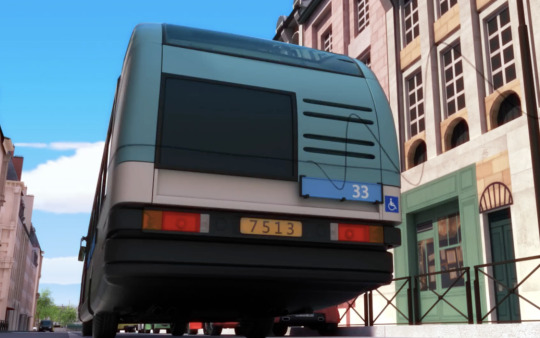
This design actually originated with the Renault R312, the Agora's predecessor, which was semi-high-floor (a single step to get into the bus), and continued to be used by the Agora's successor, the Irisbus Citelis, starting 2006. Here's the rear of one in Liège, Belgium:

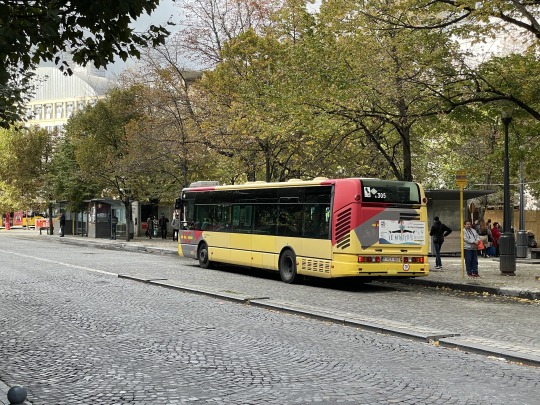
Pictures by me, do what you want with them
In real life, the curve is not quite as pronounced as it is in the show, and the show has given the bus's rear end a pronounced overbite. Again, I think that's due to copyright, but that's just a guess.
The buses also come with a variety of rear lights; the ones on these Belgian buses don't match any of the Agoras or Citelises I've seen in Paris. Either way, the same backpack, now with LED lights, is also used on the Citelis's successor, the Iveco Urbanway.
(Oh yes, in 2013, Iveco bought the remaining share of Irisbus and renamed the bus models to Iveco only, but it's still the same fundamental bus design somewhere in there. The rest of the commercial vehicle division of Renault was sold to Volvo around the time but keeps its name. Note, that's the Volvo that makes trucks, not the Volvo that builds cars, which is completely independent and owned by Geely. This confusing shit keeps happening and it keeps getting worse.)
For extra confusion, there's also a version of all three buses that doesn't have this backpack, and instead has the engine under a raised floor. I'm going to ignore this one here.
I really love all the little details they implemented on the bus, like the colored signs on the outside that show route information.
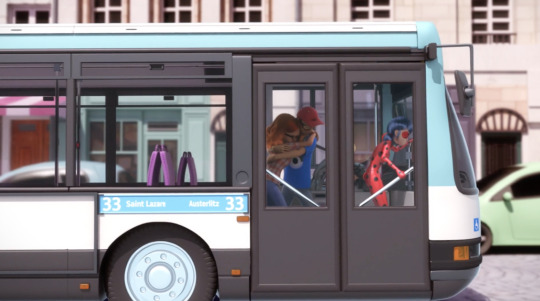
I have no idea why Paris uses these, the buses have digital displays as well, but I like them as a concept.
You can also see the frame for the advertising. In this case it's empty; in other episodes it has shown ads for Adrien, Le Perfume, or for the weather girl contest in Stormy Weather.
On the interior, I'll be honest with you, I'm not that knowledgeable about french buses.
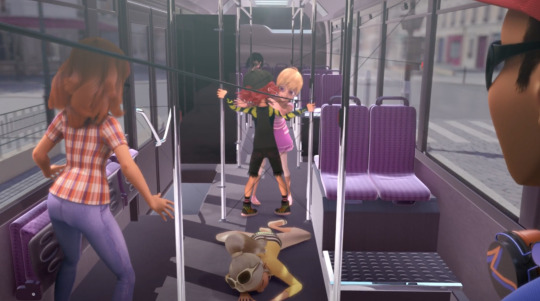
I think the overall layout is correct, but I think the seat color is wrong. Buses and trams owned by Paris's transit operator RATP usually have green seats. Maybe that was another copyright issue? I know that sounds weird, but the transit operator of Berlin (BVG) was recently in a legal battle with the designer of their seat patterns over the question whether BVG could sell merchandise with that pattern. RATP does not have that problem because they sell barely any interesting merch, no matter how much I'd like to buy some.
Next: The dashboard.

We get actually fairly good looks at it in some episodes, in particular Animan, and it looks pretty good.

In partikular, it seems to be a fairly close match for the VDV-Standardfahrerarbeitsplatz, seen here in a Citelis.
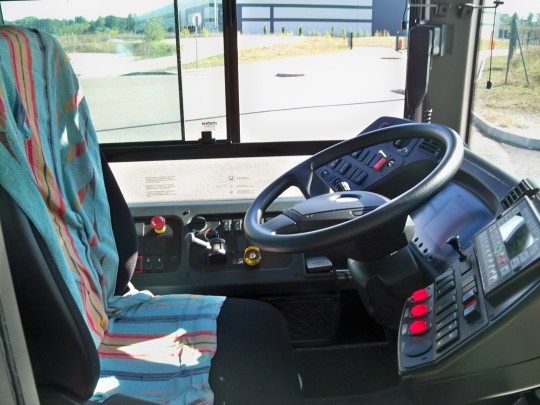
The buttons for the automatic transmissions are in different places here, but both versions seem to be available. Also note that this one has a display unit built in, but it seems that is also optional. The one in Miraculous Ladybug has a separate bus computer unit mounted next to the dashboard, which is a very common layout as well.
As the name implies, the VDV Standardfahrerarbeitsplatz is a german invention by an association of bus operators, who have standardised how a bus dashboard should look like. While bus manufacturers can offer their own, and some do, the standard design is usually also available. The advantage is that if you have buses from three different manufacturers, then you only need to train drivers once instead of separately for each bus. Since german companies build a lot of buses, their standards have become relevant in other countries as well; such as France. Paris has a lot of german-built buses these days as well.
I know the Agora didn't always use the VDV dashboard; you can find pictures of a weird angular Renault design. I don't know if they switched, or if the german standard design became available as an option, and I don't know which version RATP used. But it's certainly a type of real bus dashboard, and one that was used by the same company later on, so I think it's okay.
In some episodes, notably Glaciator 2 and Qilin, we also see the ticketing.

Marinette apparently has a Navigo pass, a contactless card that you touch to the validator in the bus. That seems perfectly accurate. In Qilin, she has forgotten that card, but luckily her mom has bought single-use tickets.

In Paris, you need to validate such pre-bought tickets first, which she does by touching them to the RFID validator.

That's really not how it works in real life. Instead there's a distinct validator for these bus tickets that stamps them, but this bus model doesn't have that. It's okay enough, I guess.
The main issue with the interior of the bus is something else: It has a step.

That's a bit of a problem. In real life, the Agora does not have a step, the entire floor is flat. That was its main advantage over the older Renault R312, which did have the step. I have no idea why the show chose to include a step in here. They're consistent about it as well; there's a step at the rear door, too.
(By the way, do not think about where the doors go when they're open. It's different every episode. They're supposed to swing inwards, but sometimes they swing out, or they just disappear.)
My final nitpick would probably be the underside.
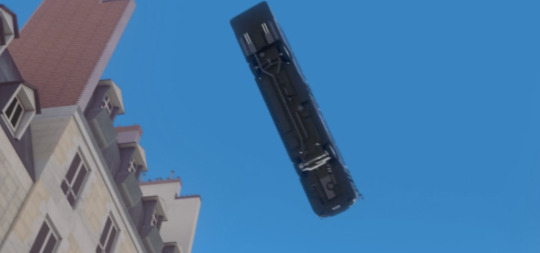
I have no idea what an Agora is supposed to look like from underneath. But given that the engine is in the back, it's probably not supposed to have exhaust lines running all the way under it. Yes, that's as minor a nitpick as they come, but I couldn't resist once I saw it.
Overall, though, it's a good bus, and very appropriate if you only have the money to model one. The Agora is definitely a staple of Parisian cityscapes, with more than 2500 delivered to RATP, almost a quarter of the entire production run.
If there's one issue with its inclusion in the show, it's the age. The last Agora was built in 2006, and most of them have long been retired. A number of them are already in RATP's vast historic collection, which is sadly not open to the public except on special occasions. I don't get why; there would definitely be interest, just look at the London transport museum. Paris's public transport is every bit as iconic as London's, but they don't market it as such, and they don't have the museums and merchandise to capitalise on it, and I think that's just sad. Please allow me to give you money, RATP!
Anyway, these days, no Agora can go into Paris anymore. Paris has established a low emission zone in 2017, and all Agoras are too old to be allowed in. There are some Agoras still running in the wider Paris region, but not the city centre proper (though that one still has some Citelises, and also some Heuliez versions, which is a whole other can of worms). If we assume that Miraculous Ladybug takes place in some sort of eternal 2014/2015, which is still the best guess for a timeline that I've seen, then the Agora still fits, but it would hardly be the only or most common bus anymore.
The age becomes an issue in one particular episode, in Bakerix, where Bakerix complains that the bus is electric, and that's not how it's supposed to be.
In real life, the Agora was never available as a battery electric bus. Paris is buying lots of battery electric buses these days, including ones that have some lineage to the Agora, but the original only ever had internal combustion engines…
…well, except for sometimes. There were also Trolleybus versions of the Agora. First, there is the Škoda 24Tr (normal version) or 25Tr (articulated version), which was confusingly built in two versions, one based on the Agora and one based on the Citelis. There is also an Irisbus Agora Trolleybus with electrical equipment by Škoda. Is that a different trolley bus based on the Agora built in cooperation between Škoda and Irisbus, or is it the same one, and they just sometimes branded it as a Škoda and sometimes as an Irisbus depending on local contracts? Your guess is as good as mine. Either way, though, those were only sold in Eastern Europe. Paris doesn't have any trolley bus wires, so there were no electric Agoras here, ever.
That aside, though, I think Miraculous Ladybug did overall really well on the bus, given the constraints they had to work with, and I'm looking forward to seeing it in plenty more episodes.
I think that's the end of this series, unless the show starts bringing the tram or the RER into it. I don't think they will, because I don't think they could tell any new stories that way, but I would greatly appreciate it. Anyway, thanks for reading!
[Part 1: The Metro Train]
[Part 2: The Metro Station]
[Part 3: Startrain]
[Part 4: The Gare du Nord]
#miraculous ladybug#renault agora#irisbus agora#agora#renault#irisbus#bus#public transit#train reviews#bus reviews
63 notes
·
View notes
Text
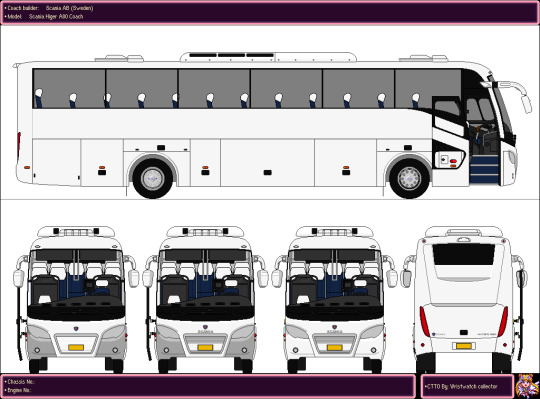
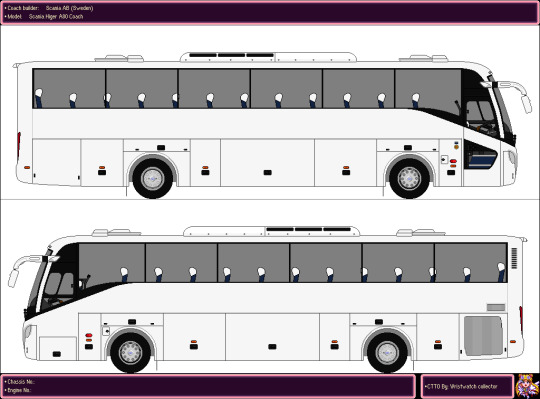
Scania Higer A80 Coach
CTTO: @wristwatchcollector for Higer KLQ6123K Coach Template
#buses#artist#kenyou#scania#scania bus#scania higer#scania higer a80#scania a80#template#inspiration#inspired#a80#sailor moon#sailor stars#eternal sailor moon#sailor moon sailor stars#fuwa fuwa panic
3 notes
·
View notes
Text
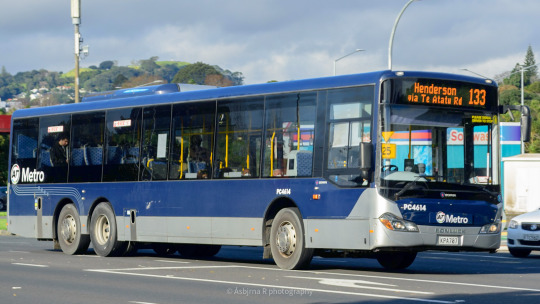
Pavlovich Coachlines №4614 [Scania K320UB/Bonluck] seen at Pt. Chevalier on a quiet run to Henderson. (2022)
Following the introduction of the Western Express/WX1 service, the 133 and 134 were both disestablished and replaced.
Pavlovich Coachlines, however, managed to win the contract for the WX1 and as a result have pledged to begin electrifying their fleet.
7 notes
·
View notes
Text
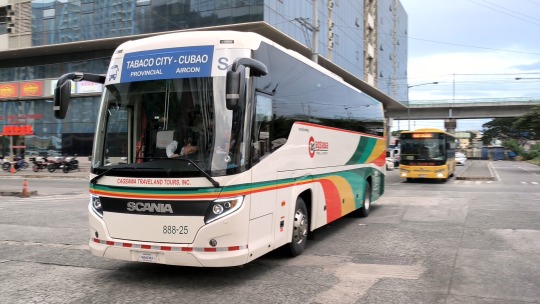

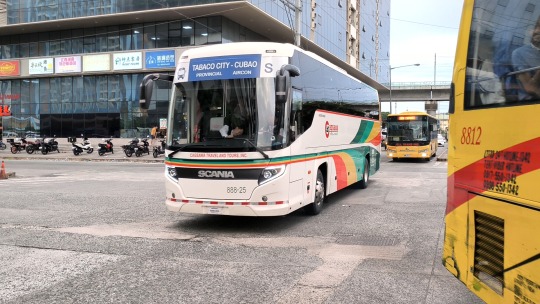
Oragon Scania
Cagsawa Travel and Tours Inc. 888-25
Chassis Manufacturer: Scania AB
Chassis Model: Scania YS2K
Engine Manufacturer: Scania AB
Engine Model: Scania DC13-400
Coach Manufacturer: Higer Bus Co. Ltd., Scania AB
Coach Model: Scania K400 A80T Touring
Engine location: Rear
Seating Configuration: 2x2
Seating Capacity: 38 passengers + 1 driver + 1 conductor
Type of Service: Public Utility Bus (PUB)
Type of Operation: Provincial Operation
Classification: Elite Class Airconditioned Bus (AC)
Route: PITX (Parañaque City) - Tabaco City (Albay)
Franchise Route: Cubao (Quezon City) - Tabaco City (Albay)
Transmission: Scania OptiCruise
Speed: 8 forward, 1 reverse
Suspension: Electronically Controlled Air Suspension
Shot Location: Parañaque Integrated Terminal Exchange, Bay City, Parañaque City
Date: December 3, 2023
NOTE: Errors may be evident with this description. Corrections will be done once verified.
3 notes
·
View notes
Text

Genesis Joybus killer
Del Monte Land Transportation Bus Company (DLTBCo.)
Stallion Express
French: Étalon Express
Italian: Stallone Espresso
Spanish: Semental Expreso
Hino RN 1626 DMMWI DM24 Coach
I did the Stallion livery all by myself from scratch, it was not easy.
& next time, i'll make another Scania Touring, the locally-made Touring by Del Monte Motor Works, Inc. to make way for the Scandinavian Stallion.
#buses in the philippines#buses#air conditioned#2x1#dltbco#dltbco.#del monte land transportation bus company#dmmwi#del monte motor works inc.#my masterpiece#provincial operation#provincial bus#hino#hino rn#stallion express#rn8jsua#j08e-ub
4 notes
·
View notes
Text
The East Lancs Vyking is a type of double-decker bus body built by East Lancashire Coachbuilders. It is the double-deck version of the Spryte. It continued the long line of 'misspelt' names which continued until the Scania OmniDekka. It was built on the Volvo B7TL chassis. The name "Vyking" was derived from the chassis being built by a company from Sweden.
East Lancs Vyking
Yellow Buses Vyking bodied Volvo B7TL in Christchurch in 2010
Overview
Manufacturer
East Lancashire Coachbuilders
Production
2000-2006
Body and chassis
Doors
1 or 2 doors
Floor type
Low floor
Chassis
Volvo B7L
Volvo B7TL
Related
East Lancs Lolyne
East Lancs Nordic
Powertrain
Capacity
63 to 80 seated
Dimensions
Length
10,200 to 10,932mm
Width
2,535mm
Height
4,200 to 4,300mm
Chronology
Predecessor
East Lancs Pyoneer
Successor
East Lancs Olympus
Options included air conditioning, additional CCTV, bonded glazing, double glazing, driver protection, electronic destination displays, powered wheelchair ramp.[1]
2 notes
·
View notes